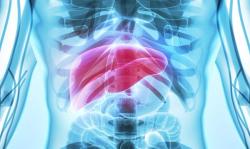Prescription Medication May Influence Iron Deficiency Anemia Development
Long-term exposure to proton pump inhibitors and oral anticoagulants was linked to an increased risk of IDA presentation.

Credit: Ksenia Yakovleva/Unsplash
Long-term exposure to proton pump inhibitors (PPIs) and oral anticoagulants (OACs) was independently associated with the risk of iron deficiency anemia (IDA) development, according to a recent case-control study.1
However, longstanding treatment with antiplatelet therapy did not predispose patients to the development of IDA, nor did antidepressants or non-steroidal anti-inflammatories.
“While association does not prove causation, the findings could potentially influence prescribing practice, particularly of PPIs in those with unexplained recurrent IDA,” wrote the investigative team, led by Jonathon Snook, MA DPhil, Poole Hospital NHS Foundation Trust.
IDA represents a critical global healthcare issue, with primary causes stemming from a reduction in assimilation or enhanced iron loss.2 Many cases of IDA in the adult UK population have been linked to an underlying cause in the upper or lower gastrointestinal (GI) tract, but the majority of cases remain unexplained.3
Elderly patients, taking frequent medications, are typically referred for further investigation on how these medications may contribute to IDA development4. Multiple therapies could influence iron balance in the GI tract and potentially elevate the risk of IDA development.
However, few published studies with confirmatory evidence exist on the relevance of long-term therapy with OACs, antiplatelet agents, and PPIs on the pathogenesis of IDA, with little evidence for non-steroidal anti-inflammatories and antidepressants.1 With the lack of clear guidance, Snook and colleagues indicated the need for further research for a comprehensive systematic review of this relationship.
The IDA cohort comprised consecutive referrals to the IDA service at the investigator’s hospital between November 2022 and June 2023, including adult patients with evidence of underlying iron deficiency. Controls consisted of consecutive fast-track referrals to the gastroenterology department during this study period for all other indications than IDA.
A personal electronic healthcare database generated in primary care, and collecting individual repeat prescription lists, was used to determine exposure to each class of medication. Multivariable logistic regression modeling helped calculate odds ratios (ORs) for the association between IDA presentation and each medication class, adjusted for sex, age, and co-prescriptions.
For each medication demonstrating significance, these models were used to determine risk differences between those in the IDA cohort with or without hemorrhagic lesions after investigation.
After exclusions for incomplete data, there were 409 subjects in the IDA cohort and 801 in the control cohort included for analysis. Across both populations, drug exposure was identified in 157 (13.0%) for OACs, 202 (16.7%) for antidepressants, 205 (16.9%) for antiplatelet agents, 574 (47.4%) for PPIs, and 52 (4.3%) for non-steroidal anti-inflammatories.
Analysis showed the presence of multiple relationships between study variables, including notably strong associations between the prescription of PPIs and OACs, and antiplatelet and non-steroidal anti-inflammatories (P <.001 for each).
Statistical assessment in the model revealed a strong association between long-term PPI exposure and IDA (OR, 3.29 [95% CI, 2.47 - 4.41]; P <.001), with a statistically significant association between long-term OAC exposure and IDA (OR, 2.04 [95% CI, 1.29 to 3.24]; P = .002).
Meanwhile, IDA was negatively associated with short-term antidepressant exposure (OR, 2.05; P = .001), but not long-term therapy. No associations were identified between IDA and antiplatelet or non-steroidal anti-inflammatory exposure of any duration.
Snook and colleagues indicated the association with IDA and OACs was predominantly apparently in individuals with underlying hemorrhagic lesions in the GI tract. By contrast, the association between IDA and PPIs was independent of hemorrhagic lesion status.
“The major conclusions of this study are that antiplatelet therapy does not contribute to the development of IDA, long-term anticoagulation has a modest influence, and the largest effect appears to be exerted by long-term PPI therapy,” they wrote.
References
- Prabhu K, Warricker F, Almilaji O, Williams E, Snook J. Role of prescribed medication in the development of iron deficiency anaemia in adults-a case-control study. BMJ Open Gastroenterol. 2024;11(1):e001305. Published 2024 Jun 26. doi:10.1136/bmjgast-2023-001305
- Lopez A, Cacoub P, Macdougall IC, Peyrin-Biroulet L. Iron deficiency anaemia. Lancet. 2016;387(10021):907-916. doi:10.1016/S0140-6736(15)60865-0
- Stone H, Almilaji O, John C, et alThe dedicated iron deficiency anaemia clinic: a 15-year experienceFrontline Gastroenterology 2022;13:20-24.
- James MW, Chen CM, Goddard WP, Scott BB, Goddard AF. Risk factors for gastrointestinal malignancy in patients with iron-deficiency anaemia. Eur J Gastroenterol Hepatol. 2005;17(11):1197-1203. doi:10.1097/00042737-200511000-00008


